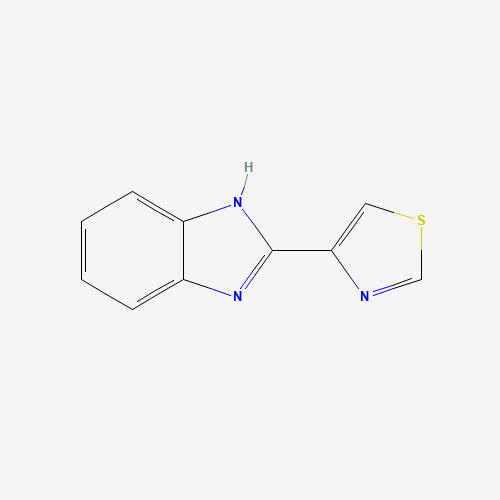| Pharmaceutical Information |
| Drug Name |
Thiabendazole |
| Drug ID |
BADD_D02196 |
| Description |
2-Substituted benzimidazole first introduced in 1962. It is active against a variety of nematodes and is the drug of choice for strongyloidiasis. It has CNS side effects and hepatototoxic potential. (From Smith and Reynard, Textbook of Pharmacology, 1992, p919) |
| Indications and Usage |
For the treatment of strongyloidiasis (threadworm), cutaneous larva migrans (creeping eruption), visceral larva migrans, and trichinosis. |
| Marketing Status |
approved; vet_approved |
| ATC Code |
Not Available |
| DrugBank ID |
DB00730
|
| KEGG ID |
D00372
|
| MeSH ID |
D013827
|
| PubChem ID |
5430
|
| TTD Drug ID |
D08QCJ
|
| NDC Product Code |
68022-7046; 51927-2278; 59014-0050; 49452-7723 |
| UNII |
N1Q45E87DT
|
| Synonyms |
Thiabendazole | Tiabendazol | Thibendole | 2-(4'-Thiazolyl)Benzimidazole | Mintezol | Omnizole | Mintesol |
|
| Chemical Information |
| Molecular Formula |
C10H7N3S |
| CAS Registry Number |
148-79-8 |
| SMILES |
C1=CC=C2C(=C1)NC(=N2)C3=CSC=N3 |
| Chemical Structure |

|
|
| ADRs Induced by Drug |
|
|
*The priority for ADR severity classification is based on FAERS assessment, followed by the most severe level in CTCAE rating. If neither is available, it will be displayed as 'Not available'.
**The 'Not Available' level is hidden by default and can be restored by clicking on the legend twice..
|
|
|

